Click on Settings on the right side panel
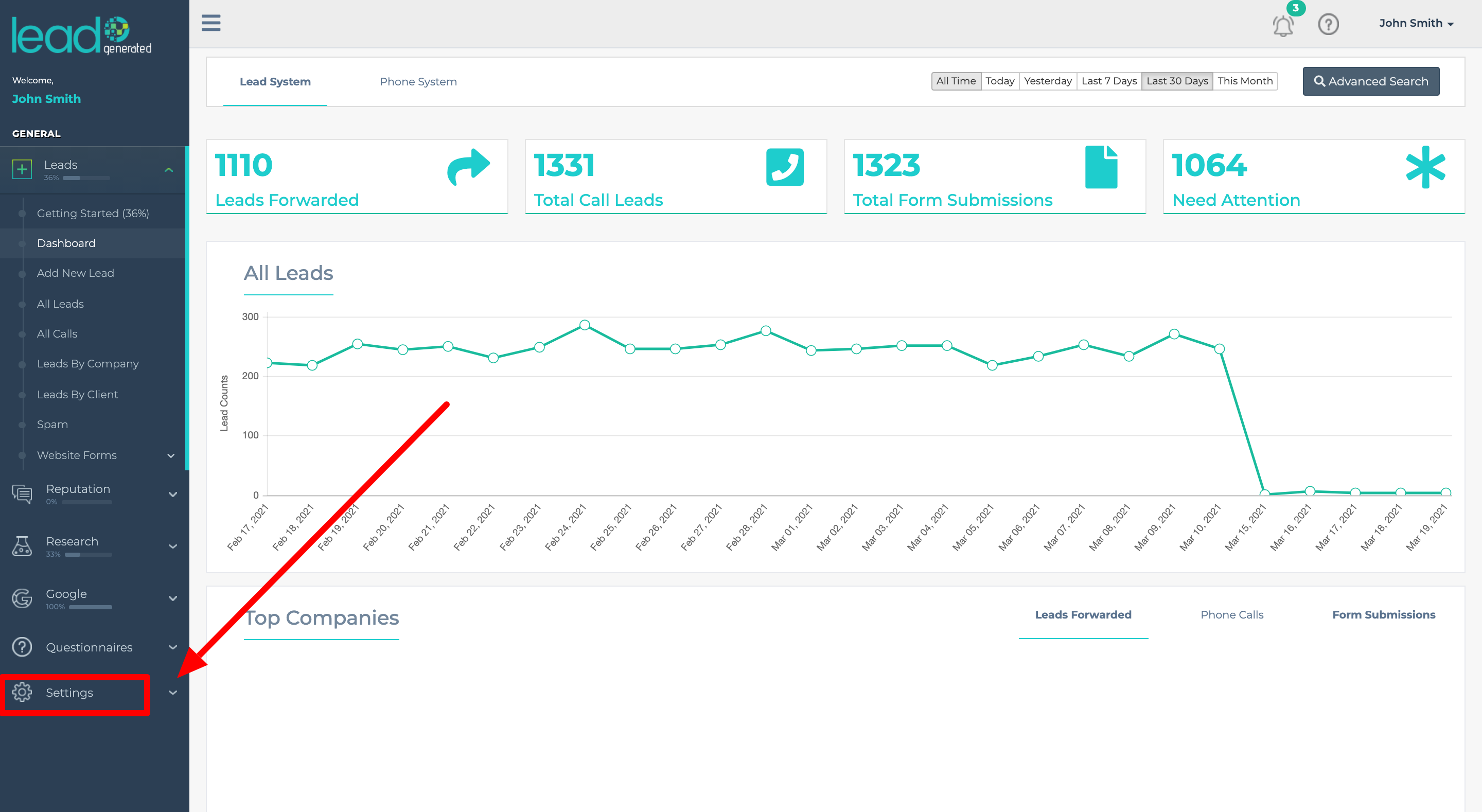
Hit All Companies
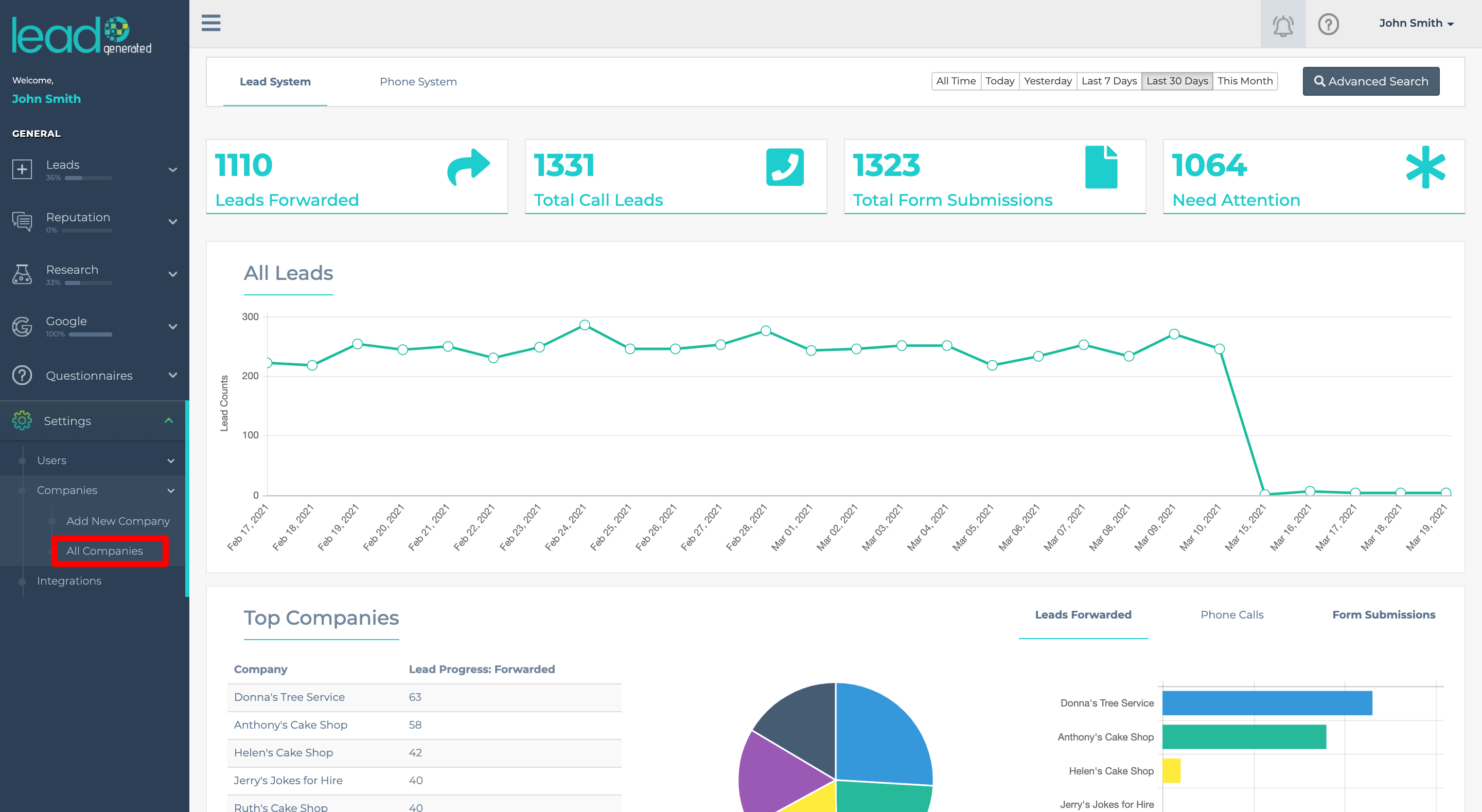
Select the company you want to edit and hit View
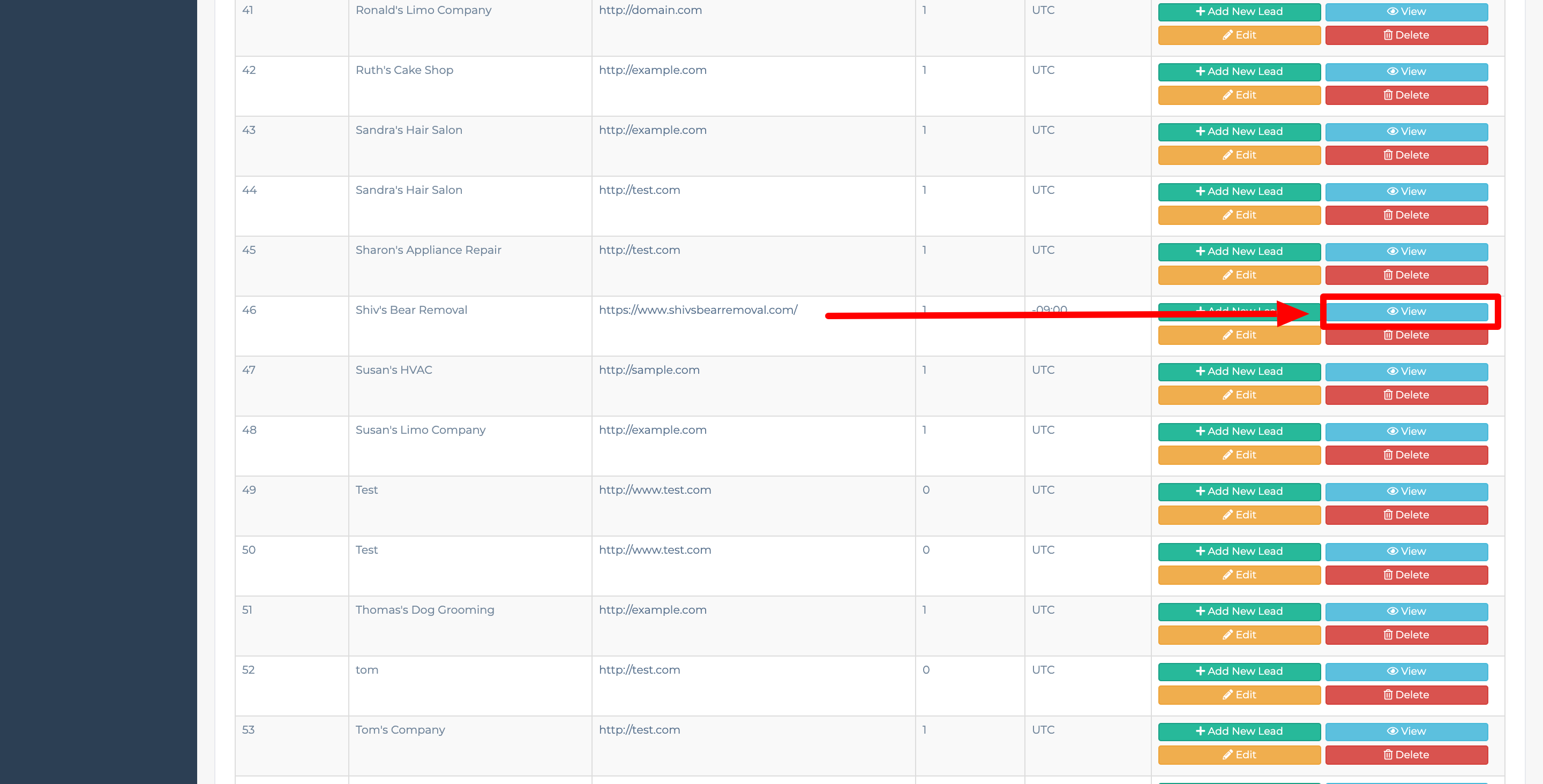
Click on Locations
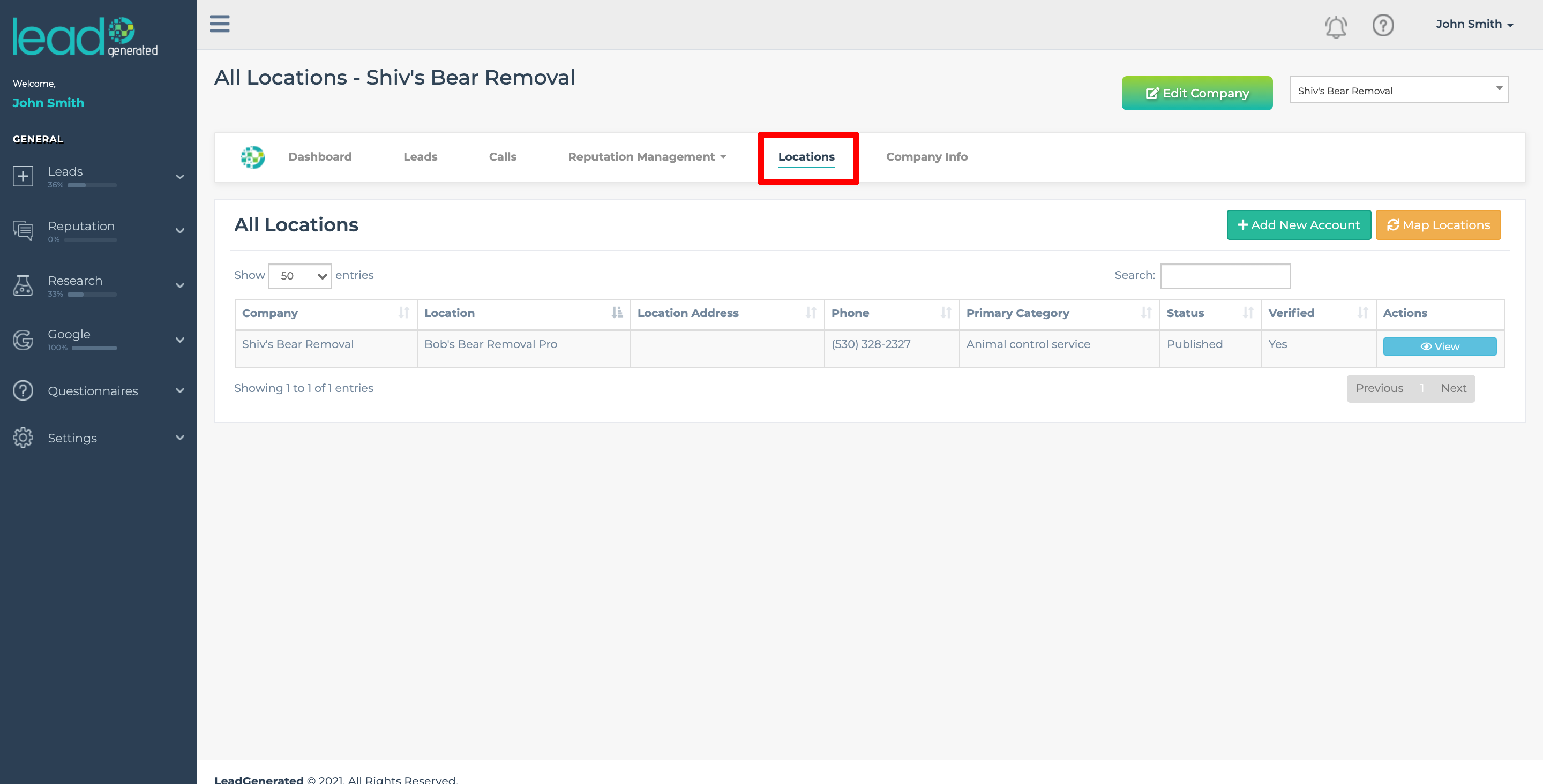
Click on Map Locations
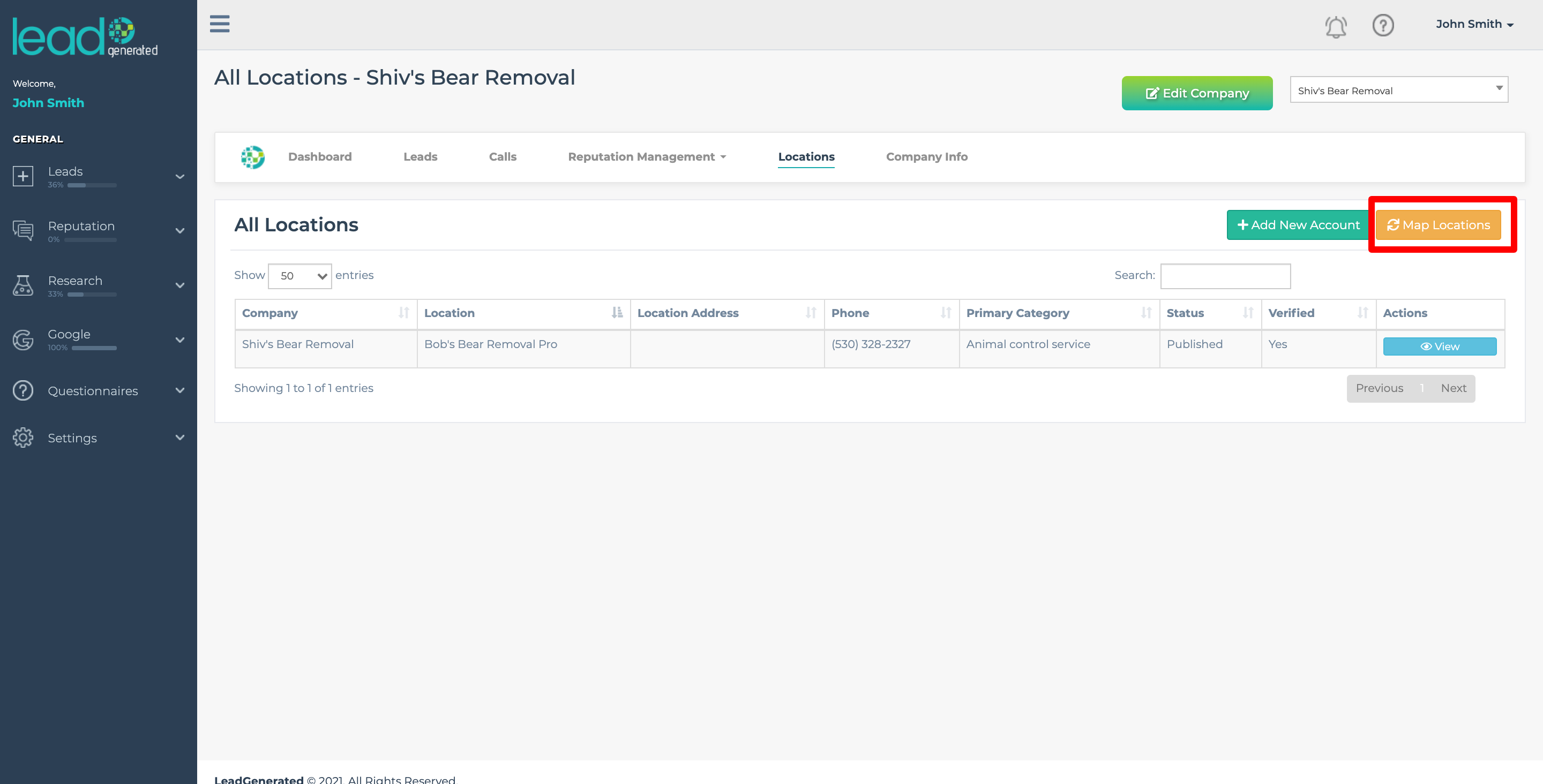
From there, you can choose which ones you want to edit
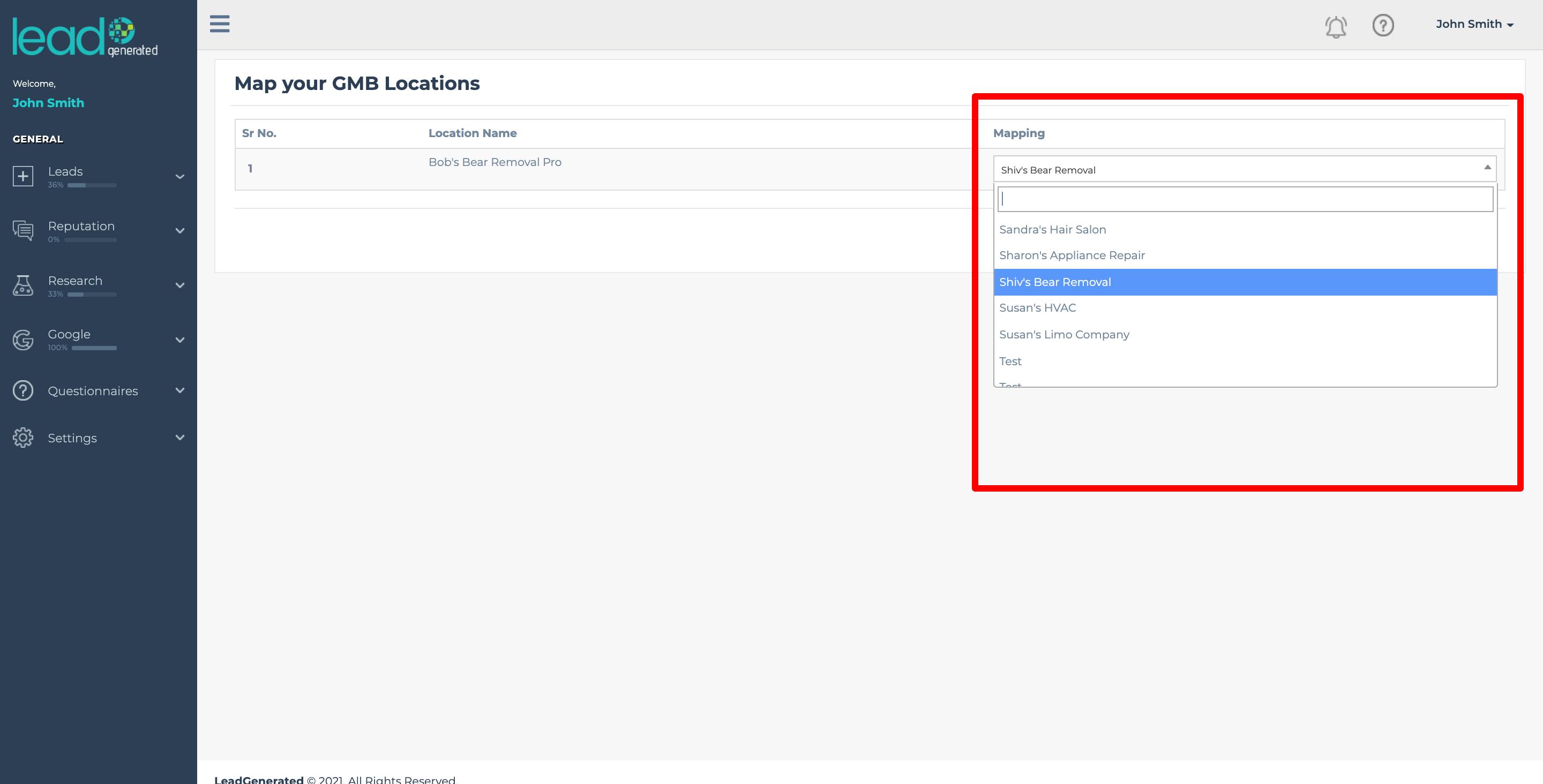
Click on Settings on the right side panel

Hit All Companies

Select the company you want to edit and hit View

Click on Locations

Click on Map Locations

From there, you can choose which ones you want to edit

The heat map tool provides a color-coded grid with numbered rankings for your Google My Business across a local geographical area. You will notice in the heat map example below the rankings range from 1 (bright green) to 20 (dark red). The circles that have 1 signify that if the Google search was performed in this location for this keyword the associated Google My Business (GMB) would have the highest ranking spot within the maps section of the search result.
Before we continue to explain the fine details and customizations that apply to the heat map tool let’s make sure we are all on the same page.
There are several areas in any given Google search result and those areas change depending on several factors. If Google is able to determine that there is local search intent, such as “Plumber Near Me” then they will show the maps or Google My Business area of the search results. You will see what this map area looks like in the picture below.
For local search, the GMB area holds the highest value with different studies showing 50-70% of the total clicks on a search result happening in this area alone.
Proximity is a major factor in your ranking within the GMB area of the search result. Google is more likely to show searchers who are closer to the address where the GMB was originally verified. This makes sense though right? If you were looking for a local restaurant you would probably be more interested in the places that are near you then ones that across town.
This means if you do a search from one spot for a local term and then you go a few miles down the road you might get very different search results.
There are many things that will influence your ranking within the coveted GMB area. The heat map tool provides an abundance of valuable information about local rankings. From checking your current results to researching the competition and doing niche research this tool can provide critical information for any local business.
First, you define the Google My Business that you would like to evaluate. There are several ways to do this and we will cover more of these in a little bit.
Next, you choose a keyword that you would like to analyze for the chosen GMB you provided in the first step.
From here there are many different ways to define the area you would like to perform your search. You may want to search the entire Chicago area or maybe just a small suburb. We have built our tool in a way where you can define the exact area and dimensions of your search.
The zoom level corresponds with Google’s zoom level in its search results. This is an advanced topic that we will cover in more detail later. Luckily we have an auto-selection which is in many times the best choice unless you are an advanced user.
To run a heat map search first you are going to need to fill out the little form so the heat map knows how to perform the search.

The search results are performed on a specific Google My Bussines (GMB). The “find by” field is where you define the specific GMB you will be evaluating during the search. There are 4 options for choosing this location.
The first and easiest one is Google Search. You can simply type in the name of that was used for the Google My Business and select the from the list of matching results. Unfortunately, this will not work for many business types and you may need to resort to one of the other methods to locate the GMB you would like to evaluate.
Each Google My Business has a unique map URL that can be used to identify it. There are many ways to find this URL, we will show you one that will always work. You can find the map URL for any business, which is great for researching the competition.
1. Select the Map URL option from the top control.
2. Enter this URL in your browser: https://www.google.com/maps
3. Enter the exact name of the Google My Business you would like to evaluate in the top left corner. As you type in this field Google will search it’s listed of verified businesses. When you see the name of GMB, select it.
There are a few reasons that you may not see your Google My Business show up on the list. If the GMB was only just verified it may not be listed here yet. If your GMB is not verified, has a status of pending, or suspended it will not show on the list. For those situations, you will need to address those issues before you take advantage of this tool.
After selecting the company you should be on a screen similar to this one:
4. The next step is to click the share button
5. Click the copy link button from the popup menu
6. Now that you have this link copied you need to post it into the browser address bar and hit the enter button on your keyboard.
After you hit the enter button Google will immediately redirect to another URL. This is an example of the URL after Google Redirects. This is NOT the Map URL
https://www.google.com/maps/place//data=!4m2!3m1!1s0x80998f4d70d041bd:0xac7634c26565b1c3?source=g.page.share
After a few seconds Google will redirect to a different URL. This one is your Map URL. Below is an example of a valid map URL. Notice it does NOT have the word share at the end of it.
https://www.google.com/maps/place/Shivvy’s+Bear+Removal+Pros/@38.8795213,-120.1600487,11z/data=!3m1!4b1!4m5!3m4!1s0x80998f4d70d041bd:0xac7634c26565b1c3!8m2!3d38.879605!4d-120.0199645
7. Copy the Map URL from the address bar of your browser
8. Paste the Map URL into the Find By Field (make sure you have Map URL selected in the top control)
Each Google My Business has a unique map Google Place ID that can be used to identify it.
The My GMB option in the Find By control works with GMB’s that you have added to your Lead Generated account. If your GMB is not showing on the list that it has not been added to your Lead Generated account. To populate this list connect the Google Account that is associated with the GMB.
The keyword is the actual search team the heat map will analyze. Any slight variation in a search term can yield completely different results. In this box enter the keyword for which you would like to evaluate the rankings. Currently, we have the option to search 1 keyword at a time.

The grid size allows you to determine how many points you would like to check on the map. The number represents how many points go horizontally across the screen and how many go vertically. You see in the selection below we have chosen a 3 by 3 grid.

The meters/miles control directly relates to the grid size control. This is the distance between the points on the grid. You have many options for setting the distance. You can use the Metric system or the US Customary Units system of miles. To toggle between the miles or meters click the switch bar at the top. Note you can also set the size of your grid by drawing a square or polygon using the custom grid controls explained in detail later in this article.
This corresponds with the zoom level from Google.
The custom grid controls are three buttons located at the top of the map area that can provide some additional precision when defining the area for a heat map search
These controls are meant to be used after you have already filled out the heat map search settings field above the map. You can use these settings to change the size, shape or positioning of where the heat map search will be performed.
The hand grabber tool allows you to reposition the map by clicking and dragging the map. To use this tool first select the hand icon located at the top of the map. Next, click into the map, keep the mouse button down, and the mouse. You will notice the hand pulls the map as you drag
The draw a shape tool allows you to create a custom shape and size for the heat map search. The first point you make in the map needs to connect with the last point in the map to close the shape.
The rectangle tool allows you to draw rectangles for your heat map search.

The graph is really pretty with all the colors and the map, but wouldn’t it be great if we could see the hard numbers from the graph? That’s exactly what the averages tab provides for you. You can access by clicking on the tab in screenshot below.
You will notice that each grid point has a number, that is ranking for the specific company within the GMB area of the search results for the given search term if it had been performed at the location it aligns with on the map. As you can see in the image below we have created a 3 by 3 grid which means there are 9 different grid points on the map. If we total the score from each of these grid points we will get 28 points. To calculate the average we divide the total points of 28 by the number of spots there are on the grid. 28/9 = 3.11.
Our heat map only tracks the top 20 positions for each point for any given search term. The top 20 field shows you how many times this company appeared within the top 20 for the given heat map. So if you run a 9 x 9 grid there are 81 available grid points. If they appear in the top 20 for every grid point then you will see a result that says 81/81.
For these columns, we are giving you the average score but only for 25% of the grid at a time.
Northwest – Top left 25% quadrant of the map
Northeast – Top right 25% quadrant of the map
Southwest – Botom left 25% quadrant of the map
Southeast – Bottom right 25% quadrant of the map
Keyword lists allow you to automate the heat map for your chosen terms in a predefined area. Ranking well for one keyword is great but to really have a positive impact on the number of leads we need to rank for multiple keywords. Rather than having to run a heat map and wait and then run another and so on we created keyword lists. Our system will run a heat map for each keyword on your list one after another. You can take advantage of the keyword list functionality through the create heat map screen or through our scheduling screen.
To access the keyword list open the heat map area of the application
1. Expand research from the left navigation menu.
2. Select GMB Heat Map.
3. Choose the Keywords tab from the top horizontal navigation.
The numbered items below correspond with the number photo below.
As mentioned earlier the keyword list can be used from two different areas within the application. The two areas are the create new heat map and the scheduling page.
By default, our heat map tries to pick a location in the center of your service area. This means if the service area defined by your Google My Business is a large area the center or the default selected area could be in a location that seems strange. The good news is you can search in any area you like and redefine the size, shape, and location of the search grid from within the heat map tool.
Let’s look at an example of this in action. In the picture below you can see the company, Treeco Tree Specialists has selected within their GMB settings a very large service area covering most of southern California.
We can see in the next photo below that Lead Generated has selected a central location as the default location of this search. As this location is not so close to the actual location where the GMB was created and it is a less populated area this may not be where we would like to perform our search for this heat map.
We can easily change the location using the custom grid controls.
Custom Grid Controls
Check out this short video for a more in-depth look and video walk-through on how to make the adjustment to the correct area for your heat map search.
Lead Generated works on a credit basis for the lead management, reputation management, and GMB management modules. As you activate a credit in one of these modules the credit is deducted from the credit balance in your subscription. If at some point you would like reclaim the credit and release the connection between the module and the selected company you can do this through the company info tab of the company dashboard.
1. Expand the Settings option from the left navigation menu.
2. Expand the companies sub-menu from within the settings menu item.
3. Select “All Companies”.
4. Click the view button next to company you wish to adjust.
5. Select the “Company Info” tab.
6. Chose Deactivate next to the selected module.
7. Confirm by entering your account password. This process is irreversible.
The default behavior for phone calls arriving in Lead Generated is to hold them in the all calls area and not add them as leads. This allows you to preserve an accurate lead count within the leads section of Lead Generated and not have your leads be watered down by telemarketers. In a sense, your calls are held in a quarantine area until they are moved to the leads area. This process can be done manually or automated.
Click “add as lead” from the calls page. This converts the call to a lead and moves it to the various lead pages throughout the application.
The qualified call filters automate the process of moving calls to leads based on the rules that you set. This is done on a company level from the edit company screen.
For calls to be added as a lead they must meet all the selected qualified call filters. To add all calls as leads enable the call filters without any of the call filter selections.
This guide will help you connect your Gmail or G Suite email accounts to Lead Generated within our SMTP settings area. Depending on the specific account settings within your Gmail or G Suite account one or both of these steps may be necessary. To learn more about SMTP settings please read the associated support guide.
Here is an article from Gmail that explains more about the process.
While logged into your account this link should take you to the area to adjust the settings.
As an extra level of security Google has a feature that you can use with its products (such as Gmail) called app passwords or app-specific passwords. The way this works is you can create a unique password for each application (in this case Lead Generated), this will not affect the main password for your account. You then use this password just like you would your normal password within the chosen application. In a sense, it is like an alternative password that will only apply to one application.
For more information about how to set this up please check out this support article from Gmail: App Passwords.